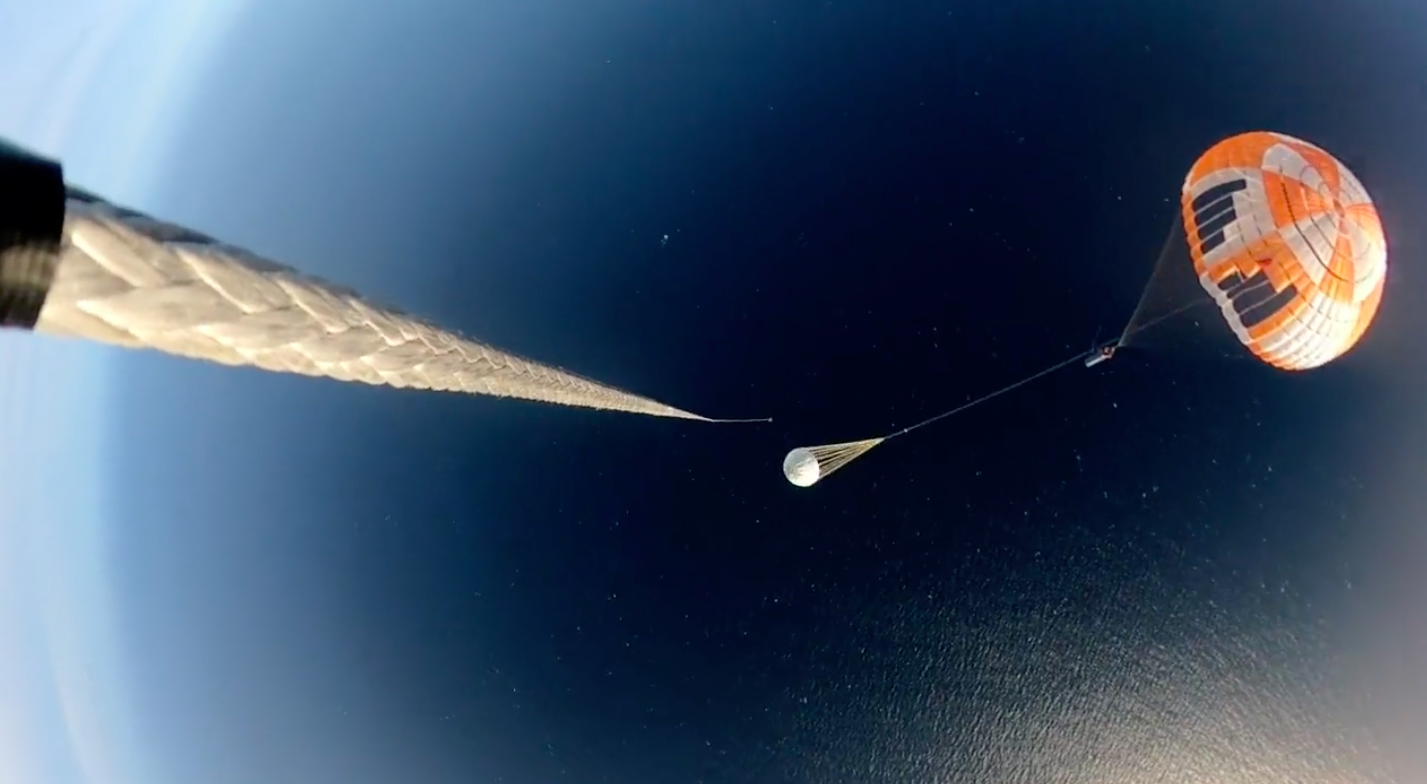Rocket Lab will try to pluck a falling rocket booster out of the sky with a helicopter for the first time ever this week, and a new video shows how it's all supposed to go down.
The California-based company released a short video on Monday (April 25) showing a successful recent helicopter catch of a dummy rocket. As the booster stand-in glides toward Earth, the chopper sidles up nearby and snags its parachute cord with a hook.
"While we await ideal weather conditions for #ThereAndBackAgain, the recovery team has been conducting capture tests using a stage 1 mass simulator. Our pilots make this look easy!" Rocket Lab representatives said Monday via Twitter, where they posted the 103-second video.
Related: Rocket Lab and its Electron booster (photos)

"There And Back Again" is the name of Rocket Lab's next mission, which is scheduled to launch no earlier than 5:30 p.m. EDT (2130 GMT) on Thursday (April 28) from the company's New Zealand launch site. The planned liftoff of the company's two-stage Electron rocket has been pushed back several times due to unfavorable weather, as the tweet mentions.
The mission's chief objective is to loft 34 satellites for a variety of customers. But most space fans will be focused on the secondary aim — the successful snag of the Electron's returning first stage shortly after liftoff, which is part of Rocket Lab's effort to make the first stage of the 59-foot-tall (18 meters) Electron reusable.
It will be a big moment for the company; Rocket Lab has successfully guided returning Electron boosters back to Earth for soft ocean splashdowns on several previous flights but has never tried to catch one before. (Rocket Lab has conducted a number of helicopter snags with dummy boosters, and they've shown us videos of these catches before.)
Get the Space.com Newsletter
Breaking space news, the latest updates on rocket launches, skywatching events and more!
Rocket Lab landed on the helicopter strategy because of Electron's size: The booster is too small to have enough fuel left over after launch to perform powered landings like the first stages of SpaceX's Falcon 9 rockets do, company representatives have said.
Rocket Lab does plan to make vertical, powered booster landings eventually, however. The company is developing a larger rocket called Neutron, which is expected to fly for the first time in 2024. Neutron will be big enough to make propulsive touchdowns, and the rocket is designed to be reusable from the start.
Mike Wall is the author of "Out There" (Grand Central Publishing, 2018; illustrated by Karl Tate), a book about the search for alien life. Follow him on Twitter @michaeldwall. Follow us on Twitter @Spacedotcom or on Facebook.
Join our Space Forums to keep talking space on the latest missions, night sky and more! And if you have a news tip, correction or comment, let us know at: community@space.com.

Michael Wall is a Senior Space Writer with Space.com and joined the team in 2010. He primarily covers exoplanets, spaceflight and military space, but has been known to dabble in the space art beat. His book about the search for alien life, "Out There," was published on Nov. 13, 2018. Before becoming a science writer, Michael worked as a herpetologist and wildlife biologist. He has a Ph.D. in evolutionary biology from the University of Sydney, Australia, a bachelor's degree from the University of Arizona, and a graduate certificate in science writing from the University of California, Santa Cruz. To find out what his latest project is, you can follow Michael on Twitter.









